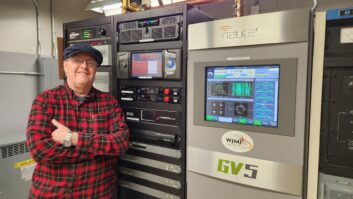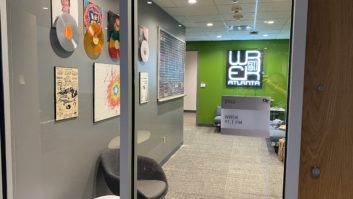NEW YORK FM radio broadcasters contacted by Radio World believe their programming strategies for companion independent HD2 and HD3 formats and platforms will prove successful and, eventually, profitable.
FM multicasting, the capability to broadcast multiple streams over a single FM frequency, is expected by proponents to allow terrestrial broadcasters to dabble in unique formats not previously available from analog radio. An HD Radio receiver is required to receive the additional multicast channels.
Critics say existing broadcasters have not in the last 10 or 20 years been populating radio channels with creative new programming, and that early experience with multicasting isn’t encouraging because of the number of automated simulcasts or “brand extensions” vs. new ideas.
Tom Owens, executive vice president of programming development, said, “There is no question broadcasters have been unable to invest at terrestrial levels in digital sidechannel programming. Despite that, I think many creative applications have been demonstrated.”
In discussions with broadcasters for this story, it is evident that the lack of advertising revenue generated by HD2 and HD3 stations and the current economic climate necessitates the need for automation and voice-tracking.
The HD Radio Alliance, an initiative formed by several broadcasters to accelerate HD Radio adoption, said in January that there were 1,865 licensed stations reported on the air in HD Radio, the majority of them FMs. The alliance counts a total of 994 multicast streams aired by those stations, some of which have more than one.
There are 9,346 FMs in the country, not counting LPFMs, translators and boosters, according to FCC data.
Multicast programmers are experimenting with concepts like the Irish Channel, Urban Gospel and Tween Radio, the HD Radio Alliance said.
Terrestrial radio’s sideband channels present obvious programming opportunities, programmers said, whether it is by extending an established brand and creating a flanker position, or filling a niche within a specific market.
Filling a niche
Industry analysts say broadcasters generally have avoided format duplication within markets.
The HD Radio Alliance, which includes Clear Channel Radio, Bonneville International, Greater Media, CBS Radio, Emmis Communications, Cumulus, Entercom, Citadel Broadcasting, Beasley Broadcast and others, originally helped steer broadcasters to specific formats to avoid format conflicts that could have resulted in competitive advantages for early HD Radio adopters.
Industry observers said those early agreements among broadcasters have expired, allowing broadcasters more freedom to program their HD2 and HD3 channels as they see fit.
Not so clear are the business models that will make those multicast channels a profit center for broadcasters, industry experts said. Many sideband channels remain commercial-free, despite relaxation of HD Radio Alliance rules that at one time prohibited commercial material on multicast channels.
At least one broadcaster, Clear Channel, specifies a maximum four-minute commercial inventory for its digital side channels, Owens said. Yet other broadcasters are selling underwriting-like mentions, similar to a non-commercial model, and sponsorship agreements to generate revenue.
“We are not yet in a position where we are being forced to make a return on investment. However, the curve is shortening and in 12 to 18 months we will have a much more viable business,” said John Dickey, executive vice president of Cumulus Media. “That, in turn, will mean we will become far more competitive in how we program our multicast channels.”
Cumulus has approximately 60 stations broadcasting in HD Radio and the majority of those have multicast capability, Dickey said.
“As we program these side channels, our philosophy is to either program the sideband with some sort of derivative of an established brand we have in the market or look at unmet needs and program a station that has viability within a reasonable scale,” Dickey said.
Dickey said HD Radio is still “gaining traction” as more HD Radio radios reach the hands of potential listeners.
“We’ll see a tipping point in the next 12 to 18 months with penetration as more cell phones and other portable devices come equipped with HD capable radios. I expect consumer demand will catch up with our deployment of HD,” Dickey said.
Cumulus, Beasley
Cumulus will continue HD Radio conversions this year and expects to keep its rollout commitment with iBiquity Digital on track, Dickey said.
Other groups have launched some unique multicast channels, including Beasley Broadcasting. Beasley launched Gretchen 99.9, a multicast channel of WKIS(FM) in Miami. The channel is inspired by and named after country music star Gretchen Wilson.

Beasley programs Pirate Radio WPOW(HD2) in Miami. Beasley also boasts Pirate Radio WPOW(HD2) in Miami, a channel suitably named for an area considered by many to be the illegal pirate broadcaster capital of the country.
“Perhaps the most obvious programming opportunity is the ability to fill a niche or to reach out to our existing listeners in a new and complimentary way,” said Beasley Broadcast Group President/COO Bruce Beasley.
Programming the multicast channels often falls to local program directors “who determine what they think will be best received in their particular community,” Beasley said.
Beasley said all of the side channels are voice-tracked. The company has not hired any additional staff for the multicast channels. It does re-broadcast WQAM(AM) in Miami on WPOW(FM) HD3.
With 356 active digital side channels, Clear Channel is the most entrenched multicast programmer. Typically the company’s sideband stations take a lower profile of imaging elements and contesting, said Owens.
The company has taken two approaches to date to programming multicast channels. Either line extensions of established terrestrial brands, or programming a diverse, narrowly targeted channel, Owens said.
“We have also taken advantage of event opportunities, such as continuous inauguration coverage or artist-specific channels parallel to new releases or tours,” Owens said.
Clear Channel’s multicast formats include The Pride Network, which targets alternative gay lifestyles, and an Americana Newgrass format in Appalachian communities. The broadcaster is also using FM sidebands to rebroadcast AM programming in some markets where they operate dominant news/talk properties, Owens said.
“It’s important to balance existing realities of HD Radio consumption with the need to grow the penetration of less immediately adoptive consumers,” Owens said.
Owens said the company has used other resources, such as the group’s Broadcast Architecture’s Pure Jazz format, to program sidebands. It is also looking at content suppliers external to Clear Channel, he said.
Ethnic programming
Greater Media, which has 12 multicast HD Radio channels company-wide, has targeted several audiences with its radio properties in Boston, said Buzz Knight, vice president of program development for the company.
“We worked hard to make unique programming that fits a market’s needs. For example, in Boston we have an Irish channel in a market with a heavy Irish population,” Knight said. That station is WTKK(HD2).
In addition, the company is targeting a younger Beantown demo with its Radio You, Boston on WBOS(HD2), aimed at high school, college and university students, Knight said. The station broadcasts a mix of alternative and indie rock.
“We look at [Radio You, Boston] as a means to not only target a younger demo but also get this population interested in radio,” Knight said.
Knight defends his group against critics who claim terrestrial radio broadcasters in general have been very conservative in launching creative programming on multicast channels.
“Speaking for our group, I think we are doing some very unique things right now. Particularly in Boston,” he said.
Regent Communications has several HD2 channels, including Q-2, a classic rocker that compliments active rock KLAQ(FM) in El Paso, Texas, said Courtney Nelson, program director of KLAQ.
The HD2 station’s programming direction was the result of market research, which asked the question, “If a new station were to come to El Paso, would you prefer this or this?” said Nelson.
The sideband channel of KLAQ lacks any promotions or commercials at this point, but it does re-broadcast segments of the KLAQ morning show each noon hour, she said.
“There is an element of cross promotion between the two.”
Bonneville International recently supplanted music on most of its multicast channels with brokered ethnic programming from WorldBand Media, a producer of South Asian programming.
Emmis Communications last fall announced a similar deal with WorldBand Media to broadcast to South Asian communities in New York, Los Angles and Chicago using Emmis’ HD Radio multicast channels.












